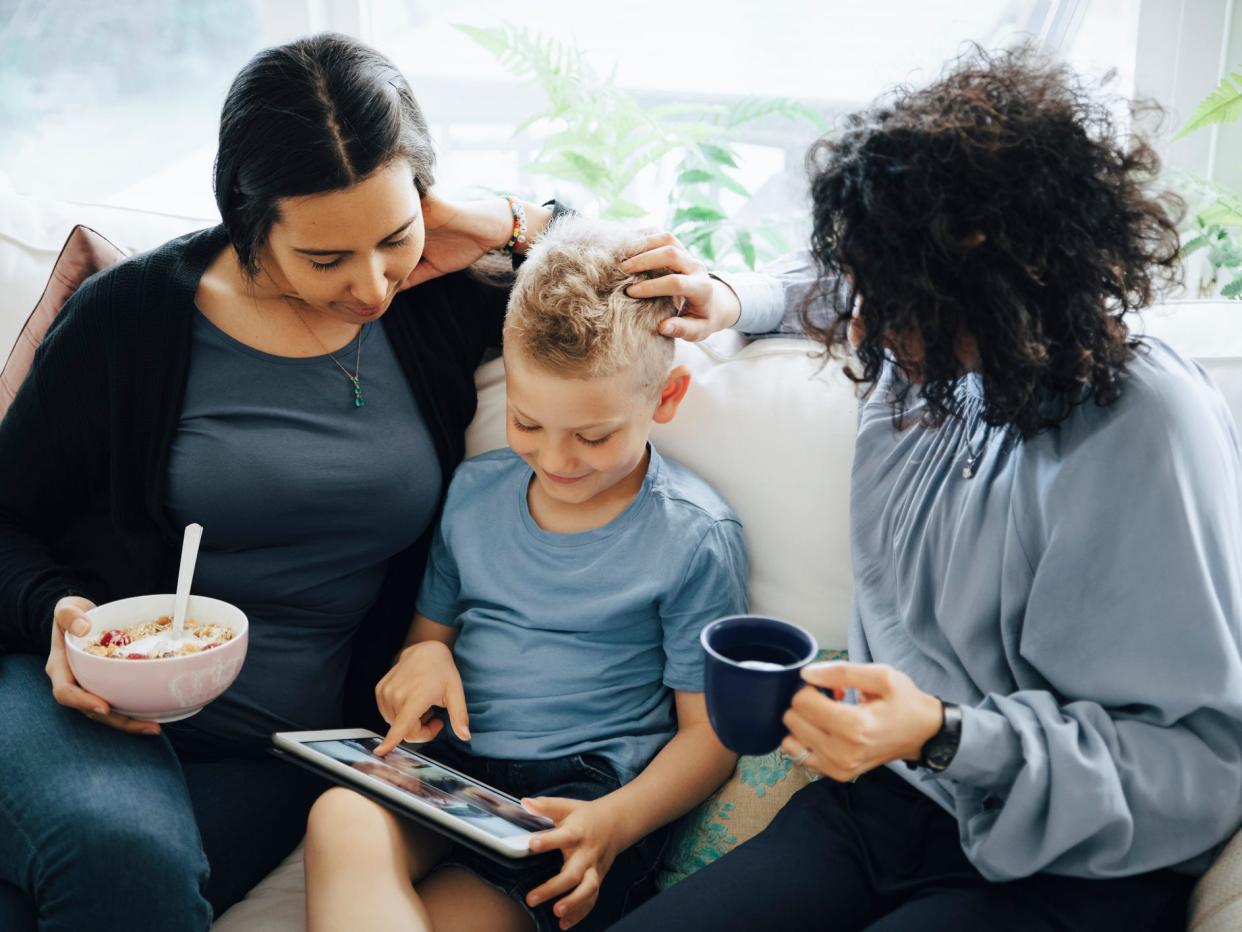Our child has 2 households. Here's how we navigate the differences in rules.

My son has two houses, and there are different rules in each.
We keep an open dialogue about rules and allow him to ask questions about the choices we make.
We want him to know that even though we do things differently, we all want what's best for him.
I started dating my partner five years ago, and she had a 4-year-old son. At the time, she was co-parenting with her ex, and when we moved into our house together, I also started co-parenting. Our son has two homes, and how he's parented varies widely by household. Two of the main differences are bedtimes and what he is allowed to watch.
To make the transition between his homes and between the different parenting styles and rules easier on our son, we encourage an open dialogue as much as possible. It's important to us to model the thought process that goes into our choices and how we set rules for him.
We want to encourage our son to think through his future choices. At the same time, we want to show him that even if other people make choices we wouldn't make, it's important to respect our differences, and we never talk badly about what's going on in the other household.
We encourage an open dialogue about the decisions we make
At our house, our son goes to bed at 7:30 p.m. To some people, this may sound like an early bedtime for a 9-year-old. But by that time, he's often trying to hold his eyes open — or alternatively, he can't stop moving because he would fall asleep if he did — so it makes total sense to us.
My son has asked why there is a difference in what time he has to go to bed at his two houses, and we've had open conversations about the reasons. We talked about how he functions much better when he gets 10 or more hours of sleep. When he doesn't, he does not listen as well or gets upset really easily, which often leads to losing his access to TV and or other electronics.
During our conversation, I asked him about times when he has been tired and if he notices if it affects his moods, like getting upset more easily. Keeping an open dialogue about the reasoning behind the decisions we make rather than just telling him we get to make the rules helps him understand.
We model that doing things differently is OK
Having open discussions about our son's two homes models for him how to navigate a world full of differences. For us, it's important that he knows that just because someone does something different, that does not mean it's wrong.
Another thing that is different between my son's two houses is his use of YouTube. At his other house, he is allowed to watch it, but at our house, he isn't. We observed that when he does, he sometimes goes down a rabbit hole that increases his anxiety (and in the past, has even led to nightmares), so we don't allow him to watch YouTube while he's in our house. When my partner approached this with her ex, the response was that nightmares are a natural occurrence. She's absolutely right, and her reason for letting him use the platform is as valid as our reason for not allowing him to.
I always emphasize that his mom and I have reasons for doing things one way and tell him that I am sure his mommy has reasons for doing things her way. I stress that it is OK that we don't do everything the same.
We make sure he knows that we're all doing what we think is best for him
Whenever we talk to him about how things are different in each of our homes, we always acknowledge that we all love him and are doing our best to do what we believe will support him the most. Emphasizing this shows that we are not saying one way is right and another isn't.
We are teaching him to understand that people make choices based on their experience and what makes sense to them. By doing this, he's learning to tolerate differences — but not only that, he's learning that differences are OK, and hopefully, as he continues to grow into an adult, will be more flexible and aware of his world because of it.
Read the original article on Business Insider

